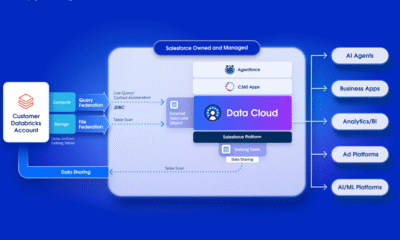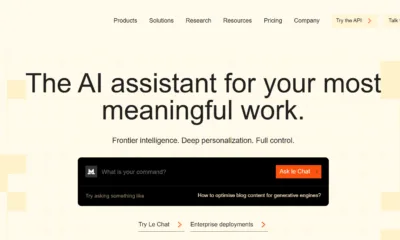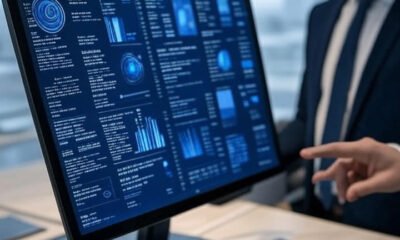There exists a need for balance while harnessing Artificial Intelligence in sports, said Alan Davis, Marketing Head, CricViz, during a panel at the PlayCom 2025: Business of Sports Summit at Bharat Mandapam, New Delhi, on Saturday.
“With anything to do with AI and technology, it’s about accuracy, depth of data. The one thing that we’re certainly trying to do with Cricviz is maintain the balance of utilising technology and AI with human intelligence.
“So, for example, if we look into our database, we’ve got records of 75,000 cricketers. Ultimately, yes, we can run that through systems and programs and models, but you still need an element of human intelligence to match that. So, I think you’ve got to find that balance across the board. That’s something that we pride ourselves – maintaining that excellent level of human input,” said Davis.
He also pointed out that Serbian tennis star Novak Djokovic is one of the best examples of how athletes can use technology to maximise performance.
The 38-year-old Djokovic was a consistent presence in 2025, managing to counter the effects of age and reach the semifinals of all four Grand Slams.
“Djokovic happens to be one of our clients for TennisViz. And we’ve been obviously delighted with his performance using our portal. He’s realised that he won’t be able to physically perform often for five sets at the same levels of [Carlos] Sinner or [Jannik] Alcaraz.
“However, if he can work out a pre-match strategy, then he gives himself a far better chance, rather than going into a game on instinct. He’s skilled enough to do that. But ultimately, he and his team will spend some hours ahead of the game planning out,” said Davis.
The session, titled ‘Wired for Winning: Tech, AI & the Science of Sport,’ also featured Iris Cordoba Mondejar, Managing Director, GSIC Powered by Microsoft, and Chintan Shah, SVP – Teams, Leagues & Federations, Sportz Interactive.
Chintan spoke about the seasonal nature of Indian sports and the challenges and opportunities it creates.
“It [seasonality] is a challenge and an opportunity, and that’s very unique to India. Most of our leagues in any sport are of very finite duration, unlike in Europe and U.S. There’s always something that the fan has in terms of relevance to engage with that product. In our situation, when we don’t have that.
“Now, during the off-season, what we try to do, and I think what is important, is to build digital stadiums where you can give those experiences to the fans. And that’s where technology can play a big role.
“Only challenge today, though, is that most of the teams are trying to do this on social media, which is again one too many. I think it’s important to shift the focus from social to doing this on your own platforms, where you can track the user behaviour and drive meaningful conversation,” said Shah.
Meanwhile, Mondejar underlined that technology in sports is not restricted to corporate entities.
“It’s not only an opportunity for entrepreneurs, it’s a need for the government. In a country in Europe where health care is public, you need to prevent obesity in kids. And fitness, wellness, practice, sport, is something that we need to promote in our country and in our family, because it’s the way to reduce the cost of expenses in the future for the hospital, but also for your insurance or for your family or to extend your life,” said Mondejar.
She cited Spain as an example.
“What happened in Spain is something very interesting. In the London Olympics, most of the Spanish medalists were women. But in Spain, it’s fewer women who practice sport than boys. This means the results are better for the girls. But, we need to focus on how we should promote, don’t stop their career when they get to 15.
“With different technologies to scouting, the government opened the school not only for the kids, for the family too. And you can go and accompany your kids to the public school, and you can jump to Zumba classes, or you can play football with dad’s colleague. The idea is to think that sport is something to do in family, and you need to start and continue, like a professional athlete or for fun,” said Mondejar.
The panel was moderated by Mahesh V. Panchagnula, Head, IIT Madras Center of Excellence on Sports Science and Analytics.
PlayCom 2025 sponsors
State Partners: Sports Development Authority of Tamil Nadu (SDAT) | Tamil Nadu Champions Foundation | Government of Uttar Pradesh | Government of Punjab | Government of Odisha
Associate Partners: ONGC | IndianOil | Havas Play | Tribes
Gaming Partner: Zupee Studio
Adrenaline Partner: JK Tyre Motorsport
Partners: Great SportsTech | CricViz | Somaiya Vidyavihar University (K J Somaiya Institute of Management) | Centre for Sports Science and Analytics (CESSA), IIT Madras | Gallant Sports & Infra Ltd | STAG Global | Sporting India – India’s Sports Directory
Nutrition Partner: The Whole Truth
Talent Partner: IOS Sports & Entertainment
Broadcast Partner: NDTV 24×7
PR Partner: WordsWork Communications Consulting
Industry Partner: SportsCom
Published on Sep 13, 2025










































